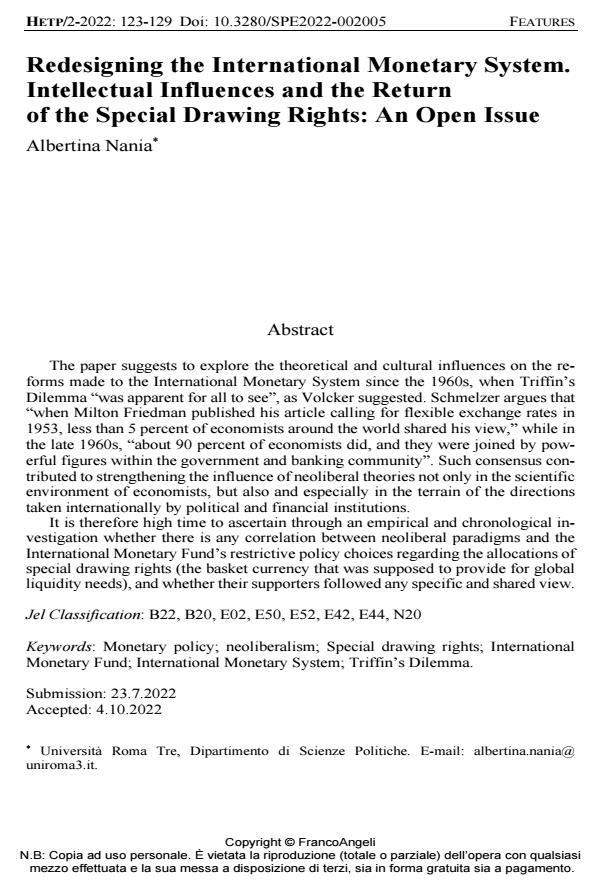Redesigning the International Monetary System. Intellectual Influences and the Return of the Special Drawing Rights: An Open Issue
Titolo Rivista HISTORY OF ECONOMIC THOUGHT AND POLICY
Autori/Curatori Albertina Nania
Anno di pubblicazione 2022 Fascicolo 2022/2
Lingua Inglese Numero pagine 7 P. 123-129 Dimensione file 35 KB
DOI 10.3280/SPE2022-002005
Il DOI è il codice a barre della proprietà intellettuale: per saperne di più
clicca qui
Qui sotto puoi vedere in anteprima la prima pagina di questo articolo.
Se questo articolo ti interessa, lo puoi acquistare (e scaricare in formato pdf) seguendo le facili indicazioni per acquistare il download credit. Acquista Download Credits per scaricare questo Articolo in formato PDF

FrancoAngeli è membro della Publishers International Linking Association, Inc (PILA)associazione indipendente e non profit per facilitare (attraverso i servizi tecnologici implementati da CrossRef.org) l’accesso degli studiosi ai contenuti digitali nelle pubblicazioni professionali e scientifiche
The paper suggests to explore the theoretical and cultural influences on the re-forms made to the International Monetary System since the 1960s, when Triffin’s Dilemma “was apparent for all to see”, as Volcker suggested. Schmelzer argues that “when Milton Friedman published his article calling for flexible exchange rates in 1953, less than 5 percent of economists around the world shared his view,” while in the late 1960s, “about 90 percent of economists did, and they were joined by powerful figures within the government and banking community”. Such con-sensus contributed to strengthening the influence of neoliberal theories not only in the scientific environment of economists, but also and especially in the terrain of the directions taken internationally by political and financial institutions. It is therefore high time to ascertain through an empirical and chronological investigation whether there is any correlation between neoliberal paradigms and the International Monetary Fund’s restrictive policy choices regarding the allocations of special drawing rights (the basket currency that was supposed to provide for global liquidity needs), and whether their supporters followed any specific and shared view.
Parole chiave:Monetary policy; neoliberalism; Special drawing rights; International Monetary Fund; International Monetary System; Triffin’s Dilemma
Jel codes:B22, B20, E02, E50, E52, E42, E44, N20
Albertina Nania, Redesigning the International Monetary System. Intellectual Influences and the Return of the Special Drawing Rights: An Open Issue in "HISTORY OF ECONOMIC THOUGHT AND POLICY" 2/2022, pp 123-129, DOI: 10.3280/SPE2022-002005